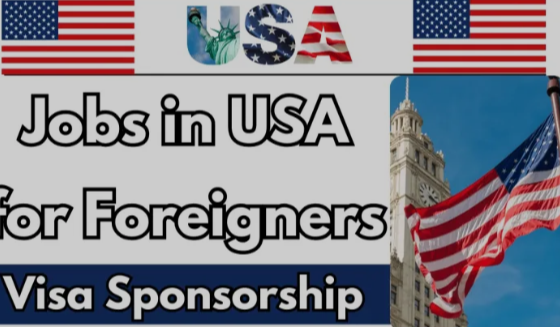The world of freelancing offers endless opportunities for artists seeking to express their creative visions while enjoying the flexibility of self-employment. For talented artists worldwide, the chance to pursue their passions as a Freelance Artist in the USA is now more accessible than ever, thanks to visa sponsorship programs and work permits that allow international artists to thrive in the dynamic, artistic culture of the United States.
This opportunity is more than just a job—it’s a chance to elevate your artistic career on an international platform. As a freelance artist in the U.S., you’ll work on exciting projects, collaborate with a diverse array of clients, and build a portfolio that reflects your unique talents. Best of all, the earning potential ranges from $10 to $50 per hour, depending on your experience and the demand for your creative services.
In this comprehensive guide, we’ll dive into the details of becoming a freelance artist in the U.S., explore the benefits, outline key responsibilities, and provide insight into how you can apply and secure visa sponsorship to make your artistic dreams a reality.
Job Overview: Freelance Artist Jobs in the USA
- Salary Range: $10-$50 per hour (based on experience and project scope)
- Employment Type: Full-time freelance
- Location: Anywhere in the USA (remote work options available)
- Education Qualifications: High school diploma, bachelor’s degree, or relevant experience in the arts
- Experience Required: 1–2 years of related experience (portfolio of work is essential)
- Visa Sponsorship: Available for eligible international candidates
Key Responsibilities of a Freelance Artist
As a freelance artist, your job is far from routine. You’ll be expected to bring creativity and vision to each project, whether you’re designing for a corporate client or creating art for personal commissions. Here are some of the core responsibilities:
- Creation of Original Artwork: Your primary role is to develop original artwork for clients, which can range from digital illustrations, paintings, and graphic designs to animations and multimedia projects. Whether it’s creating visuals for advertising campaigns or illustrations for books, you’ll have creative freedom within each brief.
- Client Collaboration: Freelancers often work closely with clients to understand their artistic needs and ensure the final product meets their expectations. This can involve developing concept art, creating drafts, revising work based on feedback, and delivering polished pieces that align with the client’s vision.
- Self-Managed Creative Projects: You will take full ownership of your creative process, from the conceptual phase to the final execution. This means setting deadlines, managing your time effectively, and ensuring you deliver high-quality work.
- Promoting and Selling Your Art: As a freelance artist, marketing your work is essential to building a client base. You’ll use social media, online galleries, and various e-commerce platforms to promote your artwork and sell pieces directly to buyers.
- Project Delivery: Freelance artists are responsible for ensuring all projects are completed on time and are of the highest standard. Clients expect not only visually stunning work but also professionalism in handling deadlines.
- Staying Updated on Industry Trends: Art, like any industry, evolves with trends and new techniques. Staying updated on the latest digital tools, software, and artistic styles is crucial for remaining competitive in the market.
- Freelance Business Management: Beyond creating art, freelance artists manage their own business aspects, including billing, client communication, and handling taxes. Effective self-promotion is also key to attracting new projects.
- Networking with Other Artists and Clients: Building a strong network of fellow artists, clients, and art enthusiasts can open doors to more collaborations, referrals, and partnerships. Regularly attending art events and participating in online communities can strengthen your professional presence.
The Benefits of Being a Freelance Artist in the USA
The freedom and autonomy of freelancing make it a highly sought-after career path, especially for creative professionals. As a freelance artist in the USA, you’ll enjoy a range of benefits that extend beyond financial rewards:
1. Flexible Work Hours
One of the biggest advantages of freelancing is the flexibility it offers. You get to set your own hours and work from virtually anywhere, giving you the freedom to manage personal commitments alongside your creative work. This makes it easier to balance your professional life with your personal interests or family responsibilities.
2. Creative Autonomy
Unlike traditional employment, where you may have limited say in the type of work you do, freelancing allows you to select projects that align with your creative interests. This sense of control can make your work more fulfilling, as you are driven by passion rather than obligation.
3. Diverse Work Opportunities
Freelance artists have the opportunity to work across multiple industries, including entertainment, publishing, advertising, and digital media. Each project brings unique challenges, helping you build a diverse portfolio and gain experience in various artistic styles and mediums.
4. Potential for Higher Income
Freelance artists often have the potential to earn more than traditional salaried employees, especially if they have a strong portfolio and a steady stream of clients. Since freelancers set their own rates, those who build a solid reputation can command higher fees for their work.
5. Personal and Professional Growth
Freelancing exposes you to a wide array of projects, styles, and techniques, pushing you to continually grow and evolve as an artist. With each new project, you refine your skills and gain valuable experience, making you a more versatile and in-demand artist.
6. Work from Anywhere
In the digital age, artists are no longer bound by geography. With a reliable internet connection, you can work from any location in the world, whether you’re in a bustling city or a quiet, remote village. This freedom to travel while working can enrich your creative process.
7. Global Networking
Freelancing allows you to network with clients and fellow artists from around the world, expanding your reach beyond local opportunities. This global connection can lead to collaborations, larger projects, and even international recognition.
8. Visa Sponsorship
International artists are in high demand in the U.S., and visa sponsorship opportunities allow skilled freelancers to live and work in the country. This opens up a wealth of opportunities for artists looking to establish themselves in the U.S. market.
Education and Qualifications
To succeed as a freelance artist, your qualifications should reflect both your passion for the arts and your technical skills. While formal education is valuable, it’s not always necessary. Here’s what you’ll need:
- Portfolio: A strong portfolio showcasing your range of work is crucial. This is the primary way potential clients evaluate your skills and creativity.
- Education: A high school diploma or equivalent is the minimum requirement. However, a bachelor’s degree in fine arts or a related field can help bolster your credentials.
- Technical Proficiency: Proficiency in various art mediums (digital and traditional) is essential. Knowledge of industry-standard software like Adobe Creative Suite or CorelDRAW is often required for digital projects.
- Communication Skills: Freelancers must have excellent communication skills to interact effectively with clients, understand their needs, and present ideas clearly.
- Self-Management: Freelancers need to be highly self-motivated, organized, and able to manage multiple projects simultaneously.
Salary Expectations
Freelance artist salaries in the U.S. can vary significantly based on your experience, the complexity of the project, and your client base. The typical hourly rate ranges from $10 to $50 per hour, but more experienced artists with established portfolios can command higher fees.
How to Apply for Freelance Artist Jobs in the USA
If you’re ready to take your artistic career to the next level, the application process is simple. Click the link provided below to begin your journey as a Freelance Artist in the USA. Be sure to submit your portfolio along with any relevant qualifications.
Frequently Asked Questions
1. How do freelance artists find work?
Freelance artists can find work through a variety of channels, including portfolio websites, social media, and freelance platforms like Upwork and Fiverr. Networking with industry professionals and clients also helps in securing projects.
2. Are freelance artists in demand in the U.S.?
Yes! The demand for freelance artists is on the rise, particularly in fields like digital media, advertising, and custom artwork.
3. Do I need a degree to be a freelance artist?
While a degree is not always necessary, it can be helpful in building your credentials. Your portfolio and experience are often more critical in securing projects.
Ready to unleash your creative potential as a Freelance Artist in the USA? Don’t wait—apply now and turn your artistic vision into a thriving career!




